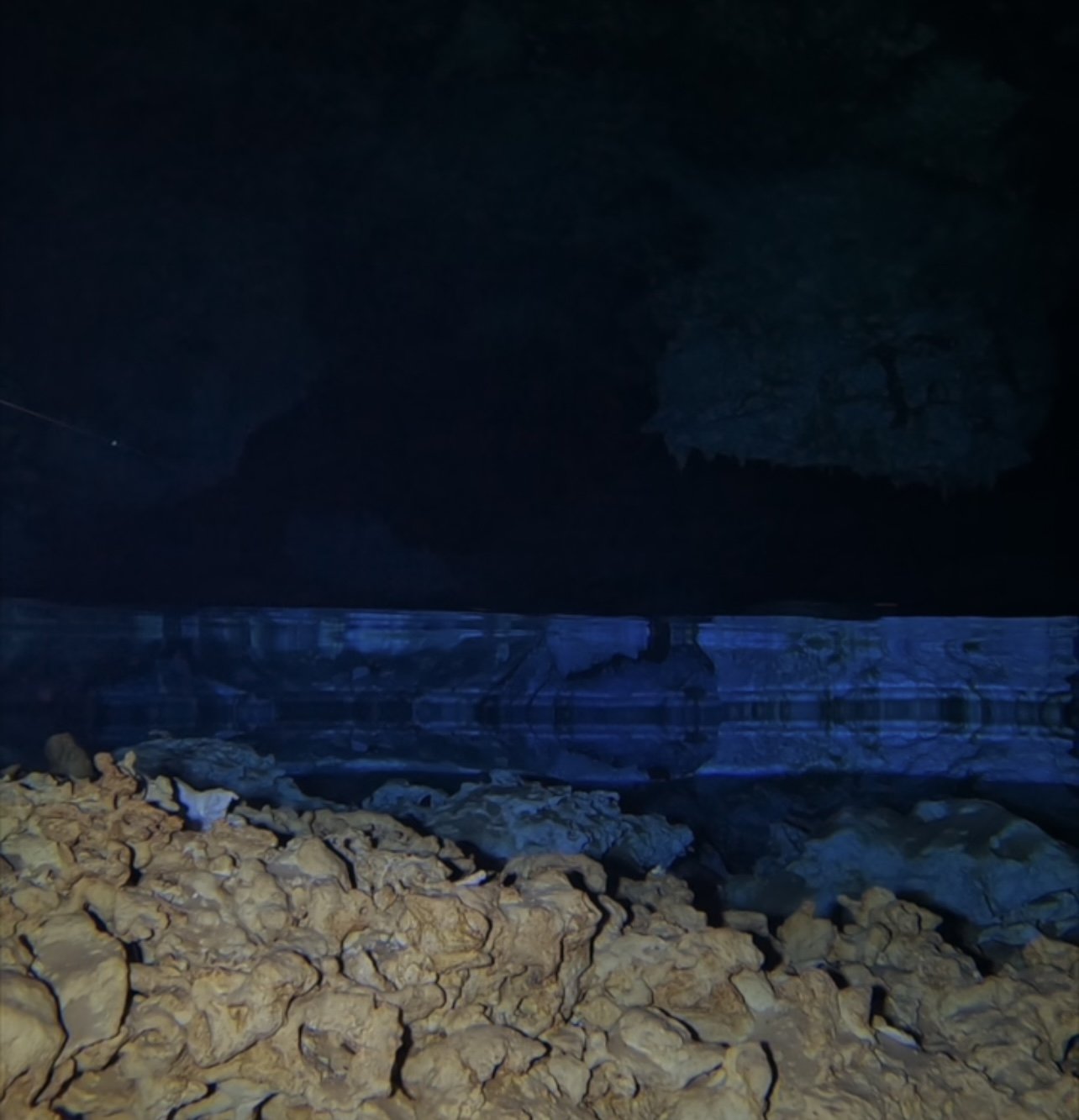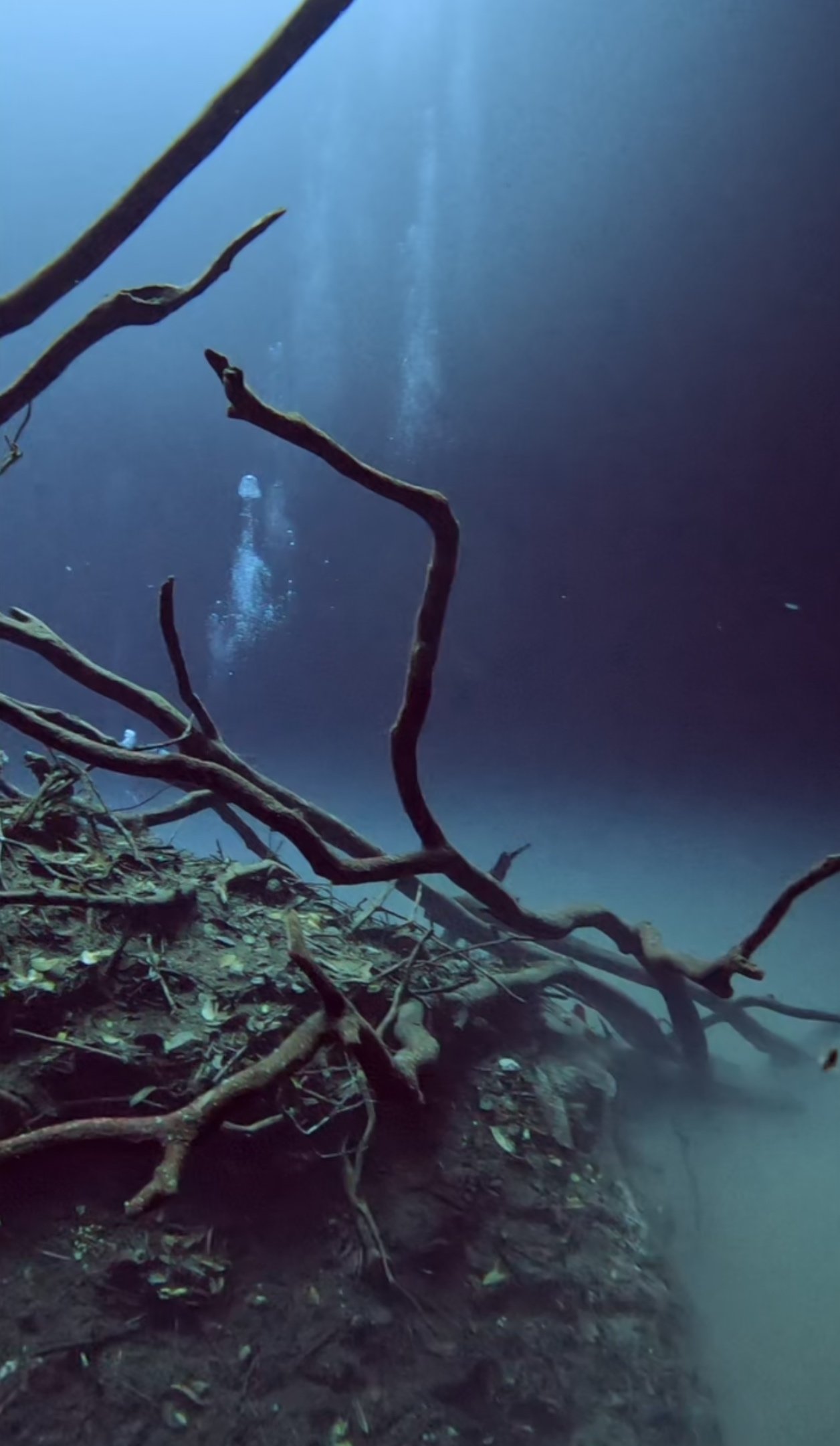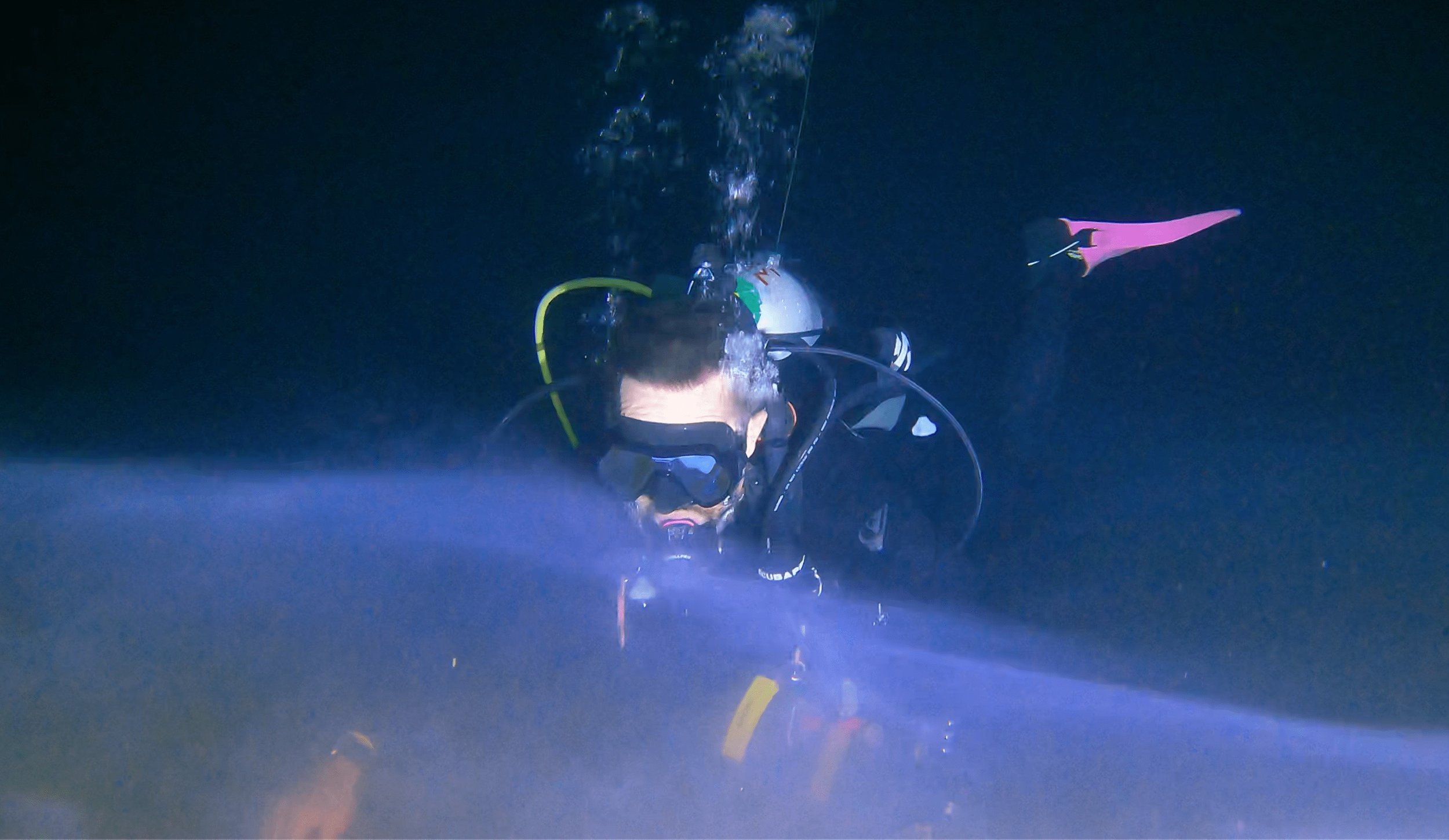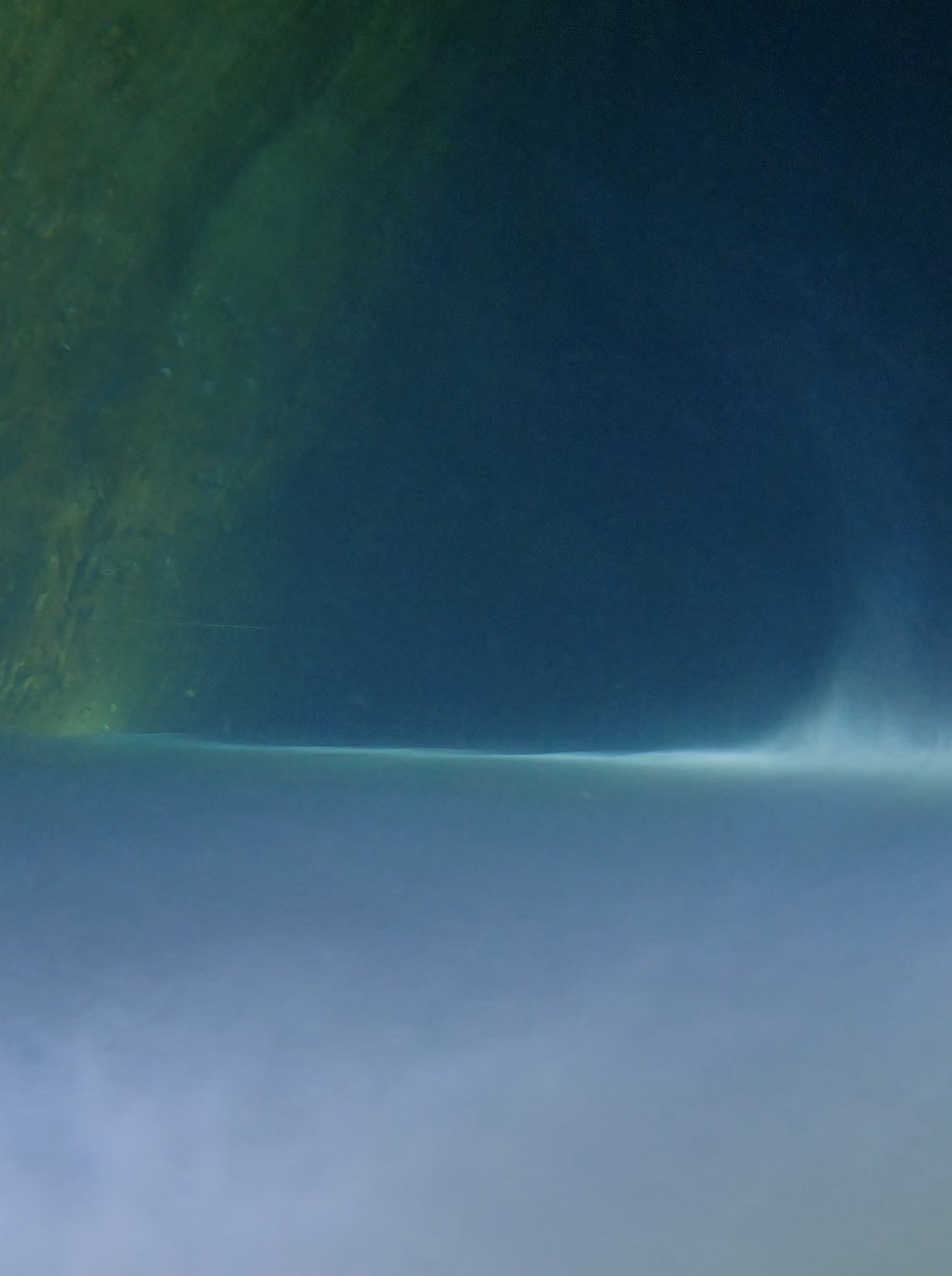
What is a cenote and
how do they form?
Cenotes are sinkholes created by the dissolution of limestone bedrock in the Yucatan Peninsula. They are formed through a process called chemical weathering, which involves the slow dissolution of limestone by slightly acidic rainwater. Rainwater becomes acidic when it interacts with CO2 in the atmosphere, forming carbonic acid. This weak acid dissolves the calcium carbonate (CaCO3) present in the limestone, creating underground channels.
Originally submerged underwater, the Yucatán Peninsula was composed of thriving coral reefs. Over millions of years these reefs were transformed into a 2.5 km (1.6 mile) thick limestone platform. This accounts for all of the marine fossils found above and below ground today.
Ocean levels varied, due to the earth’s different glacial periods. It was during periods of lower sea levels, that chemical weathering gradually carved out an intricate network of underground caves and tunnels. Dissolved limestone forms a calcium carbonate solution in water. This solution drips into the dry passages and solidifies, creating speleothems (stalactites, stalagmites, columns, flow stones etc.). While passages continued to grow, the ceiling rock was thinned making it unable to support its’ own weight then eventually collapsed inward, resulting in cenotes.
Cenote comes from the Mayan word, d’zonot, which translates to ‘cavern with water’. The Maya consider cenotes to be sacred, containing portals to Xibalbá - the Maya underworld.
The Different Cenote Types
Open
Semi-Open
Cave
Halocline
A halocline (from Greek hals, halos ‘salt’ and klinein ‘to lean’) is a distinct vertical layer in a body of water where fresh and saltwater meet. Saltwater, which is more dense and a degree or two warmer, sinks below the freshwater, creating two obvious layers.
Light passing through a halocline will refract, resulting in visual distortions and oily-looking water. Everything will appear blurry when swimming behind someone passing through a halocline, it’s quite the psychedelic experience. When untouched, the halocline looks like the mirrored surface of a flat lake, it’s super trippy! Try moving your hand around the undisturbed halocline and watch the water turn blurry.
The photos below are examples of halocline.



Hydrogen Sulfide Clouds
A dense gas created by the decomposition of organic material. Because of its density, hydrogen sulfide floats on salt water and sinks into fresh water. We limit our exposure to this toxic gas as it can cause eye irritation and smells like rotten eggs. Always make sure you have a proper seal on your mask and keep your reg in your mouth while descending into the cloud.
The photos below are examples of hydrogen sulfide.



Conservation
Each cenote is a fragile ecosystem on its own. Cenotes support numerous life forms including mammals, birds, reptiles, insects and various plants.
It is our duty to help protect and preserve these unique environments. Do not use mosquito repellent, sunscreen, or oils of any kind.
Cave formations, unlike reef coral formations, are not self-rejuvenating. Once damaged or broken, they are lost forever. Leave the cenote as you found it or better. Take only memories with you, kill only time, and leave nothing but bubbles.



